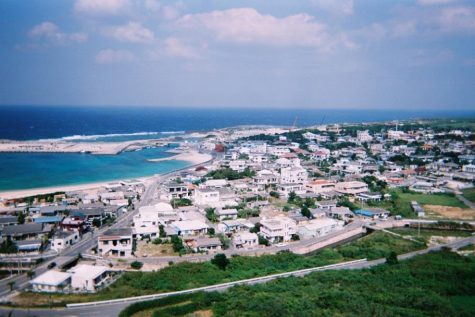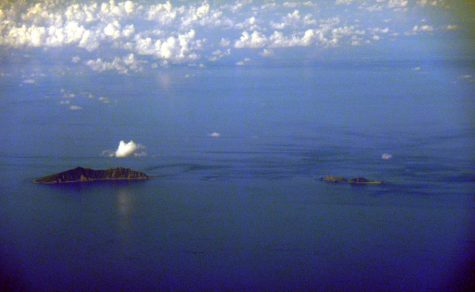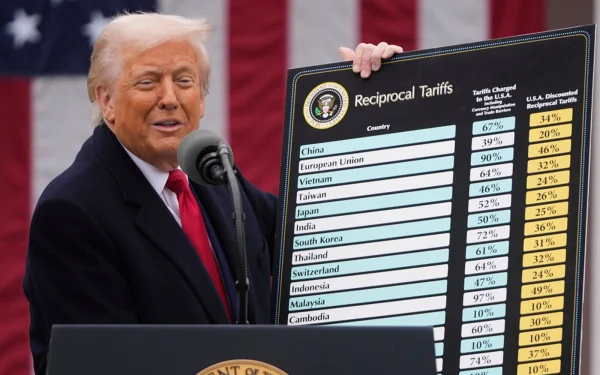Issue over the Isles
Like the waves of the ocean, a series of unsolved conflicts, one after another, are rolling over China and Japan, further threatening their relationships. Both countries are on the defense and are strengthening their claims on surrounding territories of the East China Sea. The issue of legal claim over the Diaoyue Islands has already severed the countries’ ties.
On Monday March 28th, Japan switched radar station to the East China Sea, giving it a permanent intelligence gathering post close to the Dioyue Islands and Taiwan. This new Self Defense Force base on the island of Yonaguni also acts as a base for military operation in the region aside from acting as a monitor base. As it is just sixty miles from the Taiwanese shores and ninety miles south from the Diaoyue islands, it makes make outsiders speculate its true intentions. “Until yesterday, there was no coastal observation unit west of the main Okinawa Island. It was a vacuum we needed to fill,” said Daigo Shiomitsu, the commander of the new bases in Yonaguni, “It means we can keep watch on territory surrounding Japan and respond to all situations.” Shiomitsu recently attended a ceremony at the island with 160 military personnel and 50 dignitaries overlooking constructions of military buildings and the setup of the bases.

The calculated eleven square mile island is home to about 1,500 people. The economy is based on fishing, raising cattle, and growing sugarcane. The Self Defense Force troop and family members will increase the population by a fifth. It looks like this would be a long term stay for a permanent surveillance. Japan’s decision raised tension with China as they see it as yet another military expansion and it drew many angry responses in Beijing, which disputes Japan’s claim on the Diaoyue Islands. China is on high alert over this issue and is sending aircrafts and ships monitoring the territory of Diaoyue islands.
China has raised concerns with many of its neighbors and the West with its assertive claim to most of the South China Sea and its islands where the Philippines, Vietnam, Malaysia, Taiwan and Brunei have overlapping claims. Japan has long been in territorial disputes with China over the East China Sea islands, especially the eight uninhabited islands in the heart of the East China Sea known as the Diaoyue islands in China and the Senkaku islands in Japan. They matter because other than serving as rich fishing grounds, they are a major sea route for Asian countries crossing the Pacific and lie near potential oil and gas reserves. Those islands also stand in a strategically significant position in rising competition between the U.S., Japan, and China for military control and primacy in the Asia-Pacific region.
On the matter, Japan says it surveyed the islands for ten years in the 19th century and is firmly determined that they were uninhabited. Thus, on January 14th 1895 Japan assembled a sovereignty marker and formally marked the islands into Japanese territory. After World War Two however, Japan renounced claims to a number of islands including Taiwan and the Senkaku islands in the 1951 Treaty of San Francisco and came under the U.S. trusteeship. Although in 1971, under the Okinawa reversion deal, those islands were returned to Japan. Japan says China and Taiwan raised no objections to the San Francisco deal and it was not until natural oil resources were discovered that the governments began pressing their claims.

However there are two sides of the story. China says that the islands had been part of its territory since ancient times serving as important fishing grounds under the province of Taiwan. And when Taiwan was returned to China in the Treaty of San Francisco, China says the islands should also have been returned. Chinese press says Taiwan’s Kuomintang leader Chiang Kai-shek did not raise the issue of legal claims of the Diaoyue islands at the 1975 conference because he depended on the U.S. for support and U.S. had strong bonds with Japan.
Over the next five years, Japan plans to increase its Self Defense Force in the East China Sea by about a fifth to almost 10,000 workforce, including missile batteries that will help Japan defend its western borders in the East China Sea. Chinese ships sailing from their eastern seaboard must pass through this defensive barrier to reach the Western Pacific. This is a crucial access both Japan and China needs in trading and expanding its power to the Western Pacific.





